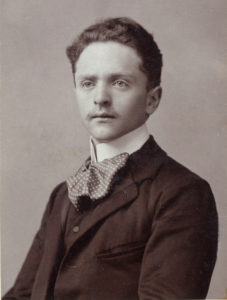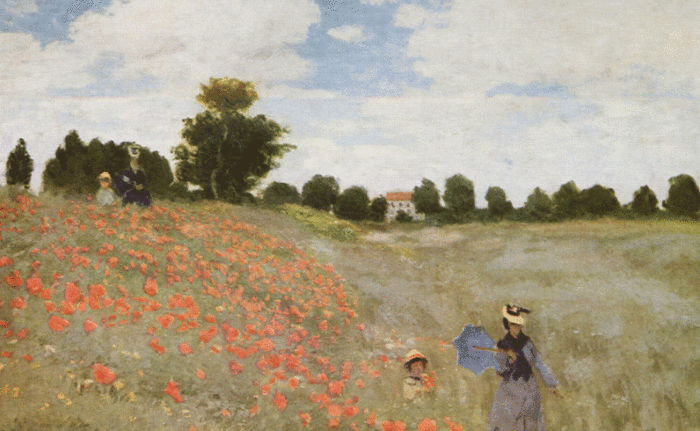On Feb. 15 & 16, the Houston Symphony presents Duke Bluebeard's Castle featuring world-renowned singers Gábor Bretz and Ekaterina Gubanova. In this post, discover the dark secrets that lie behind Bartók's fascinating operatic masterpiece. Get tickets and more information here.
Duke Bluebeard’s Castle is a miraculous accomplishment. The first efforts of most opera composers (Wagner, Verdi, Strauss, and Puccini, for instance) are rarely masterpieces, but Béla Bartók’s first opera is a flawless, captivating drama and one of the seminal works of the 20th century. Sadly, the vicissitudes of history would ensure that it would also be his only opera, and it would not be recognized as the masterpiece that it is until after Bartók’s death.
A New Take on a Classic Tale

The story of the opera derives from a fairytale told by the 17th century French fabulist Charles Perrault. In Perrault’s grisly telling, Bluebeard gives his new young bride the keys to his castle, but forbids her to open one of its chambers. Naturally, she opens it when Bluebeard is away, discovering the mutilated corpses of his previous wives. Understandably upset, she drops its key onto the bloody floor, but an enchantment renders her unable to wash it clean. When Bluebeard returns, he discovers the blood on the key and realizes what she has done. Just as he is about to deliver her to her fate, her brothers appear and slay Bluebeard. She inherits everything and marries a nice man who makes her forget all about her ordeal, and they live happily ever after.
Around the turn of the 20th century, the Bluebeard story was experiencing something of a revival as authors sought to reinterpret fairytales in light of the era’s preoccupations with symbolism, the subconscious, and the emergent field of psychology. Such retellings often altered the plot or changed the emphasis of Perrault’s story to suggest new meanings—a sort of belle époque fan fiction, if you will. Of these new Bluebeards, the one fashioned by Béla Balázs is surely the finest.
"A Lonely Man"
Bartók was extraordinarily lucky in his librettist, who produced a sophisticated, literary text a cut above the melodramatic hysterics of typical opera libretti. Béla Balázs was the ultra-Magyarized pen name of Herbert Bauer, a Hungarian poet, critic, and intellectual of German-Jewish descent. Like Bartók, Balázs dreamed of creating a new school of modern, Hungarian art inspired by the long-overlooked culture of Hungarian peasants. After being connected by a mutual friend (the composer Zoltán Kodály), the two got to know each other in 1906 during an expedition to the countryside: Bartók collected field recordings of Hungarian peasant music while Balázs copied down folk poetry. A compulsive diarist, Balázs left a vivid sketch of the composer during this trip:

“He is naïve and awkward. A 25-year-old prodigy. A wonderful, quiet persistence dwells within him. He is a frail, thin, sickly little man. I was indeed already extremely exhausted, but he simply urged and drove me on, just to continue, and collect some more. […] He studies the stars, hunts insects, engages in ethnography, etc. This avidity is obviously to be explained by the fact that so far he has not studied much of anything outside music. […] I can enjoy nothing about him apart from his music.”
Fortunately, the music was more than enough, and Balázs would warm to Bartók considerably as he became aware of his genius. Bartók himself was notoriously taciturn, and throughout his life he had trouble reaching out and connecting with people. Indeed, it was themes of existential loneliness in Balázs’s poems that had most captured the composer’s interest. The previous year he had written to his mother:
“I am a lonely man!...I may have friends in Budapest…yet there are times when I suddenly become aware of the fact that I am absolutely alone! And I prophesy, I have a foreknowledge, that this spiritual loneliness is to be my destiny. I look about me in search of the ideal companion, and yet I am fully aware that it is a vain quest. Even if I should ever succeed in finding someone, I am sure that I would soon be disappointed.”
Bartók’s marriage in 1909 and the birth of his first child (Béla Jr.) in 1910 did not seem to allay his feelings of isolation. His wife Márta left recollections of a happy family life, but noted that Bartók “rarely laughed,” although on rare instances “his smile was unforgettable.” Whether Bartók’s sense of alienation was a random quirk of personality or the result of the burden of genius is impossible to say, but it made him the ideal composer for Balázs’s Bluebeard.
Balázs’s Bluebeard
It begins with an unconventional spoken prologue that asks us, "Where is the stage" Outside us or within us?"
Bluebeard then arrives at his castle with his new wife, Judith. As she enters the dark fortress, she reveals that she has abandoned her family and betrothed to marry Bluebeard. Repeatedly, Bluebeard asks her if she is sure of her choice. She confirms, and the door of the castle is shut, plunging the space into darkness. Judith discovers that the castle walls are wet with tears, and declares her intent to bring warmth and light to Bluebeard’s abode. She then sees seven locked doors within the castle, and desires to open them to let in more light. Bluebeard warns her to remember the rumors about him, but she insists. She opens the first door to find a blood stained torture chamber. She is taken aback, but remains undaunted, demanding that the other doors be opened. Bluebeard asks her why, and she says that she loves him. He gives her another key, and she opens the armory—again, the weapons are stained with blood. Bluebeard then gives her the next three keys, urging her on. She discovers the treasury, a garden, and a window onto Bluebeard’s vast domains, but upon closer inspection each of these wonders is stained with blood. Light now pouring into the castle, Bluebeard wants to kiss Judith, but she insists on opening the last two doors. Reluctantly, he gives her another key, and she discovers a lake of tears. Bluebeard insists that the last door remain closed, but Judith confronts him, asking if the blood she has seen is the blood of his previous wives. Resigned, he gives her the final key, and the seventh chamber brings the opera to a chilling and surprising conclusion.
Balázs’s suggestive imagery is rich with interpretive possibilities, inviting audiences to discover their own meanings within the drama. Bartók responded with eerie, psychologically probing music throughout, but his score is also dazzlingly imaginative: the seven doors in particular inspired vivid tone paintings. Fundamentally, Bluebeard’s Castle is about loneliness, vulnerability, and the fear of revealing our darkest secrets to those we love.
A Long Road to Recognition
Balázs originally wrote Bluebeard’s Castle as a straight play in 1910, but soon offered it to Kodály and Bartók as an opera libretto. Intrigued by Balázs’s take on the Bluebeard story and spurred by the opportunity of entering two competitions for new Hungarian-language operas, Bartók took Balázs’s play virtually as it was, making only a few deft cuts and other minor alterations, and completed the opera by September 1911. Unfortunately, the judges of both competitions did not like any of the entries, and no prizes were awarded. The opera would not receive its premiere until 1918, after Bartók and Balázs found public success with another collaboration, the ballet The Wooden Prince. After the end of World War I, Hungary gained independence from Austria and entered a tumultuous period. Balázs’s involvement in the short-lived Hungarian Soviet Republic led the succeeding right-wing regime to ban his works—including Bluebeard’s Castle. The opera would not be performed again in Hungary until 1936, and only truly became part of the international repertory after World War II. ---Calvin Dotsey
Don’t miss Bluebeard's Castle on February 15 & 16! Visit houstonsymphony.org for tickets and more information.
This blog was originally posted on April 19, 2019.



